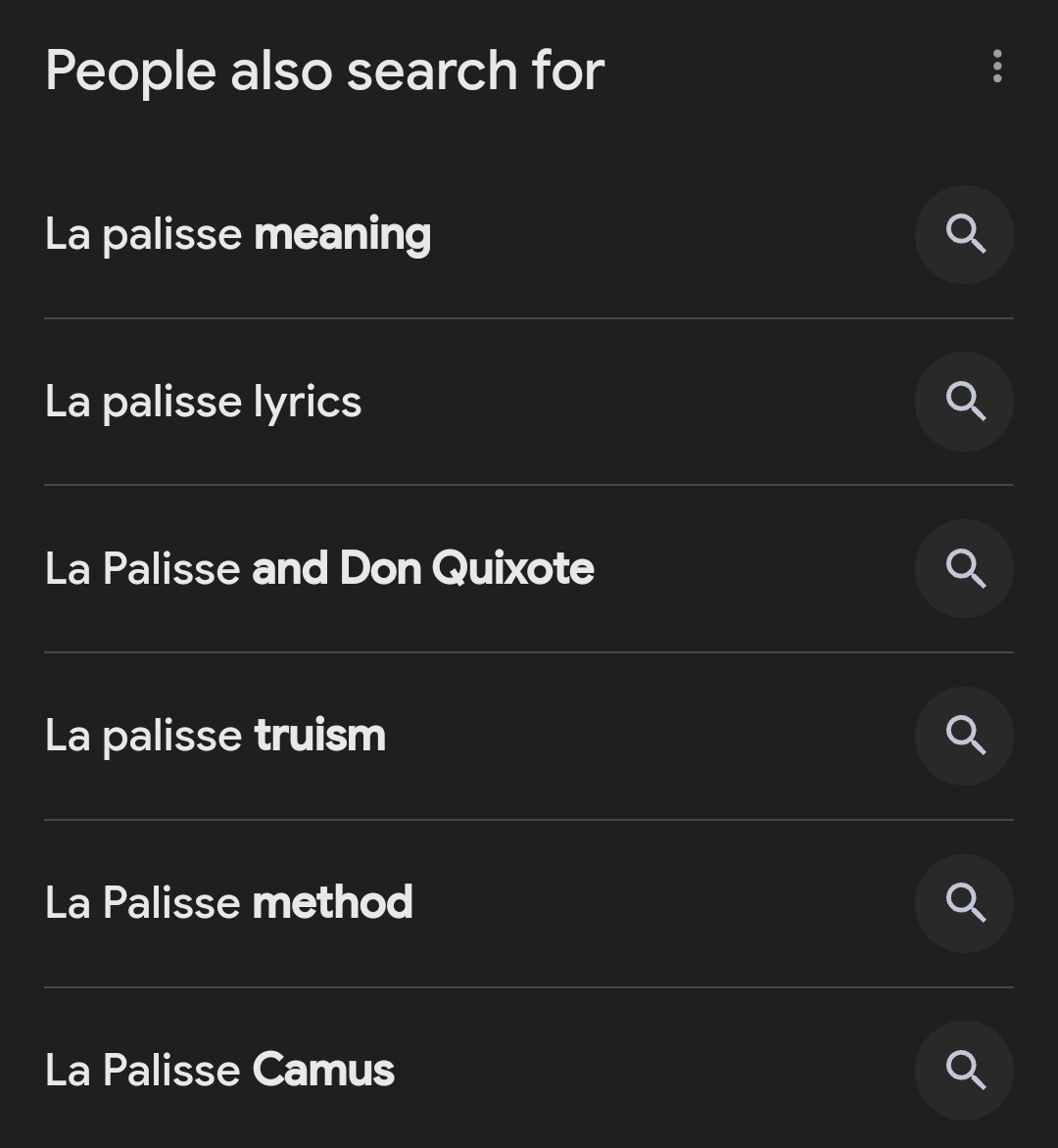Don Quixote and... "La Palisse"?
In the second paragraph of Camus's The Myth of Sisyphus I faced my first serious quandary as a translator. The 1955 translation renders it like this:
I therefore conclude that the meaning of life is the most urgent of questions. How to answer it? On all essential problems (I mean thereby those that run the risk of leading to death or those that intensify the passion of living) there are probably but two methods of thought: the method of La Palisse and the method of Don Quixote. Solely the balance between evidence and lyricism can allow us to achieve simultaneously emotion and lucidity.1
(from The Myth of Sisyphus, translated by Justin O'Brien, 1955)
The main problem here is... who the heck is La Palisse? Even as a native French speaker, this was the first I heard of this figure, so I can hardly hope for the reference to mean anything to anglophones. Indeed, it looks like just about everyone hits Google at this point:
It turns out it's a joke on Camus's part. According to Wikipedia, La Palisse is a shorthand for "comically obvious truism":
La Palice's epitaph reads
"Ci-gît le Seigneur de La Palice: s'il n'était pas mort, il ferait encore envie."
("Here lies the Seigneur de La Palice: If he weren't dead, he would still be envied.")These words were misread (accidentally or intentionally) as "...il ſerait [serait] encore en vie" ("...he would still be alive"), where the long s aids in the confusion. In the 16th century this misreading was incorporated into a popular satirical song, and in time many other variants developed, including "... que deux jours avant sa mort / il était encore en vie" ("... that two days before his death / he was still quite alive") and "... et quand il était tout nu, / il n'avait point de chemise" ("... and when he was stark naked / he didn't wear a shirt").
What Camus seems to be saying is that when pondering the meaning of life, you can't productively engage in traditional methods of philosophical argument. Rather, there are two options: you can be lyrical and idealistic like Don Quixote, or you can point out things that are so extremely obvious it's almost a joke.
OK, now I understand it, but how to translate it well? Just expecting the reader to Google feels like I'm abdicating my job as a translator.
Footnote? Jokes are not funny when you explain them.
Cut the reference and replace it by "the self-evident"? But I don't like to remove things Camus put there for a reason.
Thinking more creatively... "Captain Obvious"? That would be the worst solution of all: the extreme anachronism would destroy my invisibility.
In the end, I didn't find a way to solve this problem to my full satisfaction. But I improved on the 1955 translation a little bit by employing a common trick for cultural references that are probably new to most of the audience. I reordered the paragraph slightly to explain what La Palisse stands for in the same breath as I introduce him:
I therefore conclude that the meaning of life is the most urgent of questions. How to answer it? On all the essential problems, by which I mean those that carry the risk of death and those that redouble passion for life, there are probably just two ways of thinking: the lyricism of Don Quixote and the self-evidence of La Palisse. Only a balance between these two methods will allow us to experience emotion and clarity at the same time.
(from The Myth of Sisyphus, translated by Alexandre Elias, 2024)
(from Le Mythe de Sisyphe by Albert Camus, 1942) Je juge donc que le sens de la vie est la plus pressante des questions. Comment y répondre? Sur tous les problèmes essentiels, j’entends par là ceux qui risquent de faire mourir ou ceux qui décuplent la passion de vivre, il n’y a probablement que deux méthodes de pensée, celle de La Palisse et celle de Don Quichotte. C’est l’équilibre de l’évidence et du lyrisme qui peut seul nous permettre d’accéder en même temps à l’émotion et à la clarté.


